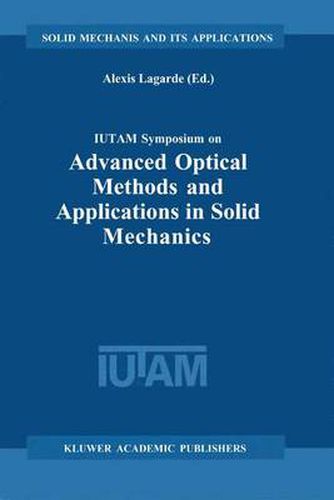Readings Newsletter
Become a Readings Member to make your shopping experience even easier.
Sign in or sign up for free!
You’re not far away from qualifying for FREE standard shipping within Australia
You’ve qualified for FREE standard shipping within Australia
The cart is loading…






This Symposium deals with new or recently obtained results for the measurement of stresses or kinematics quantities in both static and dynamic applications. The emphasis was to show the efficiency of these optical methods in many topics of solid mechanics and the promise of an approach to thermomechanical problems. The presented papers reveal the extensive evolution of photomechanics. Numerical and experimental analysis are no longer concurrent but complementary. The result is a more effective approach, with increased accuracy, and full field solutions in real time. Finally, there are significant indications of a closer coupling of optical methods with material science including both macro and microscopic aspects of materials behaviour. The proceedings, which will be a useful tool for a scientific or an engineer reader, is presented in three parts: the methods, which are diverse, and present a conceptual character; the tools which are numerical, instrumental or purely optical, and bring new possibilities; and the applications in different fields of mechanics.
$9.00 standard shipping within Australia
FREE standard shipping within Australia for orders over $100.00
Express & International shipping calculated at checkout
This Symposium deals with new or recently obtained results for the measurement of stresses or kinematics quantities in both static and dynamic applications. The emphasis was to show the efficiency of these optical methods in many topics of solid mechanics and the promise of an approach to thermomechanical problems. The presented papers reveal the extensive evolution of photomechanics. Numerical and experimental analysis are no longer concurrent but complementary. The result is a more effective approach, with increased accuracy, and full field solutions in real time. Finally, there are significant indications of a closer coupling of optical methods with material science including both macro and microscopic aspects of materials behaviour. The proceedings, which will be a useful tool for a scientific or an engineer reader, is presented in three parts: the methods, which are diverse, and present a conceptual character; the tools which are numerical, instrumental or purely optical, and bring new possibilities; and the applications in different fields of mechanics.